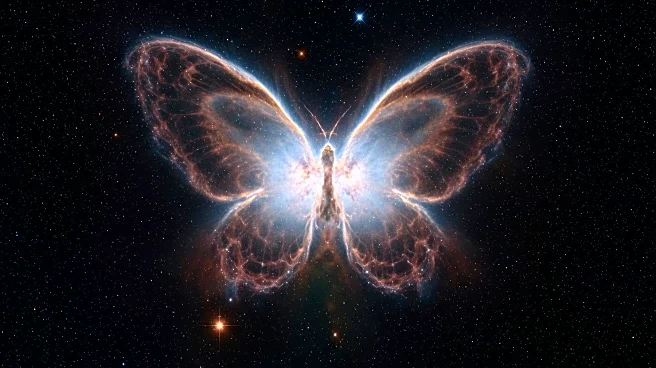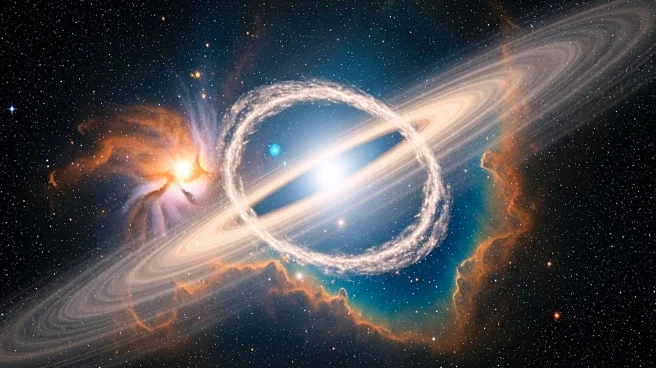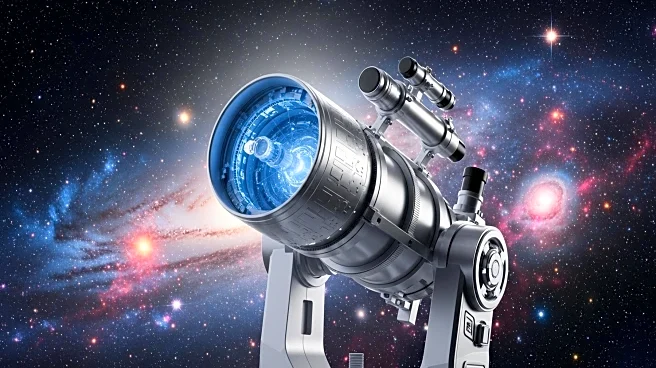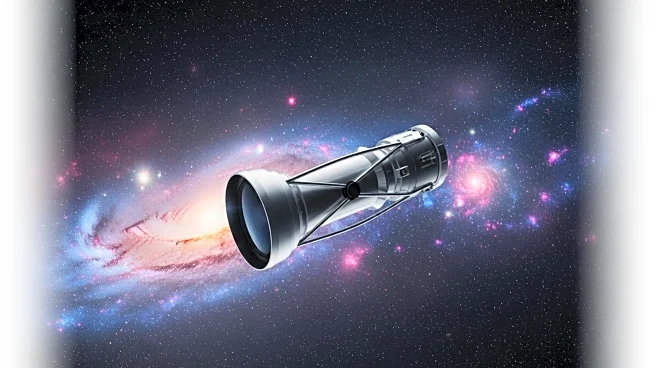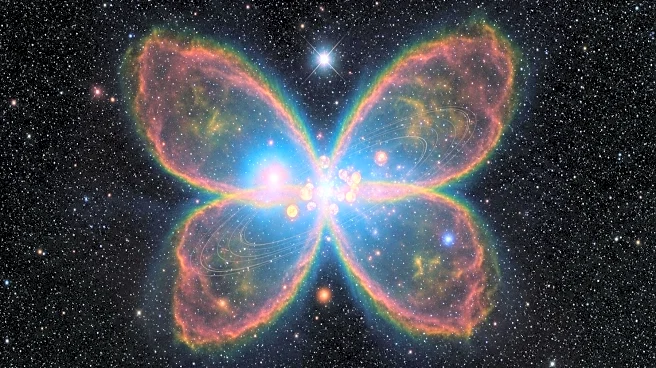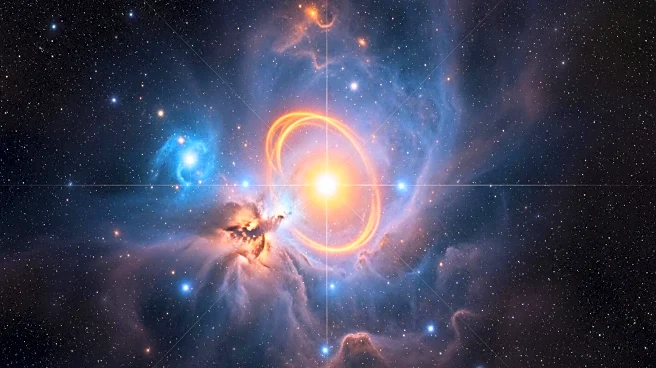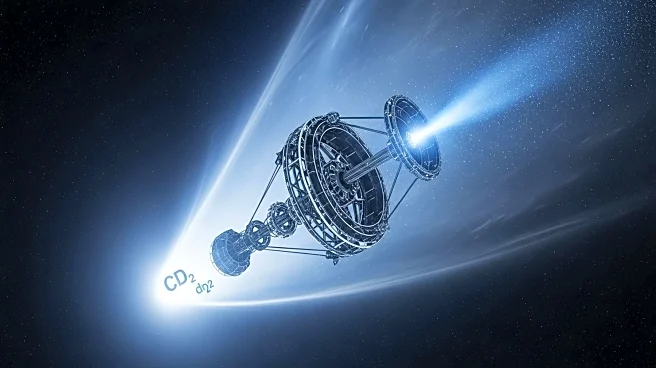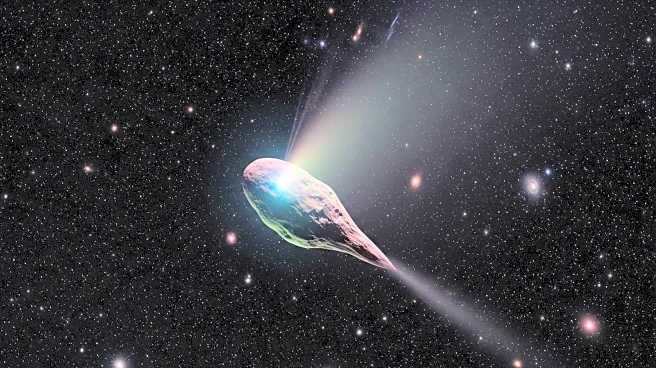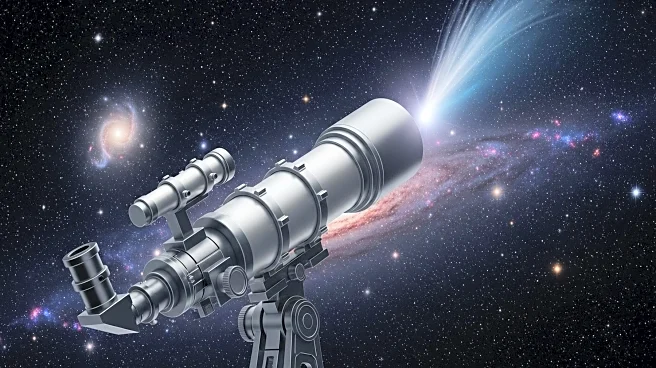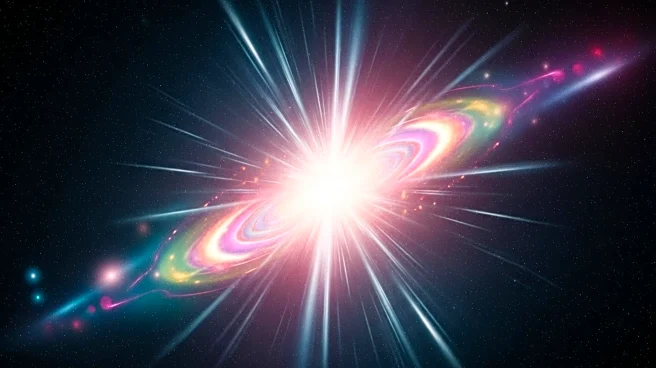What's Happening?
Astronomers have utilized the James Webb Space Telescope to gain insights into the formation of cosmic dust within the Butterfly Nebula NGC 6302, located 3,400 light-years away in the constellation of Scorpius. The nebula, a planetary nebula formed from the outer layers of a dying star, contains a white dwarf at its center surrounded by a thick torus of dust. The telescope's infrared capabilities have allowed researchers to observe both amorphous dust grains and crystalline structures within the nebula. These findings provide a clearer picture of how cosmic dust forms, which is crucial for understanding the basic materials that contribute to planet formation. The nebula also contains polycyclic aromatic hydrocarbons, which are significant in theories about the origin of carbon-based life.
Why It's Important?
The discovery of cosmic dust formation in the Butterfly Nebula is significant for understanding the origins of planets and potentially life itself. Cosmic dust plays a vital role in the formation of stars and planetary systems, and the presence of polycyclic aromatic hydrocarbons suggests pathways for the development of carbon-based life. This research enhances our knowledge of the processes that occur in dying stars and how they contribute to the material makeup of the universe. The insights gained from the James Webb Space Telescope could lead to advancements in astrophysics and a deeper understanding of the universe's evolution.
What's Next?
Future research will likely focus on further analyzing the data obtained from the James Webb Space Telescope to explore the composition and behavior of cosmic dust in other nebulae. Scientists may also investigate the implications of these findings for the formation of life-supporting planets. Continued observations using advanced telescopes could provide more detailed information on the role of cosmic dust in star and planet formation, potentially leading to new discoveries about the universe's origins.
Beyond the Headlines
The study of cosmic dust formation in nebulae like the Butterfly Nebula raises questions about the ethical and philosophical implications of understanding the universe's origins. As scientists uncover more about the building blocks of life, discussions may arise regarding the potential for life beyond Earth and the ethical considerations of space exploration. Additionally, the research highlights the importance of international collaboration in advancing scientific knowledge.
